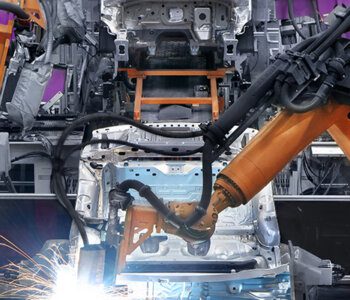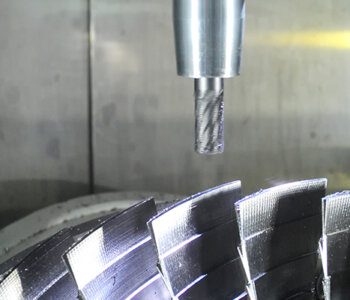
M&A as a Growth Accelerator
By Tom Zucker,
President
We have all been inundated with news of disruption and suffering caused by the recent COVID pandemic and ensuing recession. The current economic situation is best described as “uneven” with certain sectors having been minimally impacted while others have seen businesses shut down with no near-term signs of economic life. If we had the ability to fast-forward time to June 2025, I am certain in hindsight that we would see significant economic opportunity in 2020. Unfortunately, in times of turmoil, business owner’s decision-making processes are clouded by current emotions and fear which limits their ability to see the opportunities immediately in front of them. In a 1986 letter to shareholders, Warren Buffettdescribed fear andgreedas diseases that infect investors, “We simply attempt to be fearful when others aregreedyand to begreedyonly when others are fearful”. We believe that now is a time to be “greedy” (opportunistic).
Today, there are many opportunities presenting themselves to improve a business including leveraging technology to connect with new customers, identifying new partners and fortifying supply chains, and top-grading or realigning talent within your organization. During prior recessionary times, business owners often cite the opportunistic (“greedy”) and timely acquisition of a competitor as a major pivot point in the growth trajectory of their company. The ability to make in-roads into acquiring new customers, expanding into a new market, enhance capabilities, geographic expansion, or securing talented new team members are all encouraging reasons for an acquisition.
Despite the fear and uncertainty that this pandemic has produced, the majority of privately held business in America today could benefit from these circumstances by strongly considering an acquisition. Many opportunistic buyers may believe they don’t possess the adequate capital on-hand to make an acquisition, but there are many pieces to this puzzle that may help. There remains an abundance of capital available to finance a well-planned growth strategy and in many instances sellers are willing to help finance the capital gap. Traditional lenders are eager to fund strong management teams with a preference towards well-capitalized companies. For those companies (Buyers) with less capital, subordinated lenders, SBIC funds, and junior equity funds are very active in this market structuring transactions that will enable undercapitalized businesses to bridge this gap and help complete an opportunistic transaction. The punchline is that now is an ideal time to consider being “greedy” for an acquisition, and there are many financing resources available to assist a willing buyer in pursuing this strategy.
Consistent with previous recessions, future uncertainty is causing downward pressure on value and purchase price multiples. Despite these headwinds, well-run companies that were prepared to navigate the pandemic, are in great demand as sellers. We are representing a number of these companies and have exceeded owner’s expectations by obtaining higher valuations than anticipated on the last four deals we marketed. Significant M&A demand remains in the market fueled by undeployed private equity capital estimated to be several trillion dollars and the insatiable desire for growth by public companies. We expect that profitable and growing companies will garner strong interest and elevated market pricing for the foreseeable future.
Whether they are buying or selling a business, good entrepreneurs are experienced risk managers. M&A transactions require great skill and expertise to properly identify deal risks and to structure a deal to increase the likelihood of a deal being successful. Professional business buyers are approaching historic adjusted EBITDA with caution. The measure of operating profitability known as EBITDA has been expanded to included adjustments related to the Coronavirus affectionately referred to as EBITDA”C”. To balance the risk and uncertainty created by the pandemic, seasoned buyers are using earn out (contingent) structures and tiered pricing for achieving EBITDA levels in the next 12 to 24 months to calculate purchase price. Buyers are willing to pay full price for a business if the seller is willing to perform in a manner consistent with past performance that reflects a diminished impact from the pandemic.
The growth mind-set is the most important tool for an entrepreneur. The ability to approach calls with prospects, bankers, accountants and others with a credible growth plan and an optimistic perspective is essential. Rather than bemoaning politics or a negative pandemic impact, a pivot towards identifying growth opportunities by acquiring a struggling business or partnership opportunities to provide access to new markets and generating growth is a much better business exercise. The government-imposed shutdowns can have additional benefits besides creating more quality time with your family. We have found leaders of corporations in the new work at home environment are more available and willing to connect with new people and hear fresh ideas. The ability to have a meaningful conversation with these owners about their business, unwanted business units, or the possibility of adding you as a new supplier can be rewarding.
Embracing a growth-oriented mindset and exploring M&A acquisition opportunities are good steps in successfully navigating the uncertainty and disruption of the pandemic and accompanying recession. The fundamentals supporting M&A transactions remains positive and attractive despite the shutdowns and negative media coverage. Owners heeding this advice will be in a better position to successfully emerge on the other side of moving forward. Trust the sage advice of Warren Buffet by being “greedy when others are fearful.”
© Copyrighted by Tom Zucker, President of EdgePoint Capital Advisors, merger & acquisition advisors. Tom can be reached at 216-342-5858 or on the web at www.edgepoint.com.







